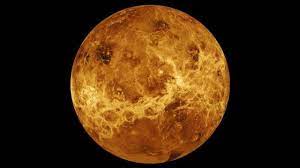NASA announced plans on Wednesday to launch a pair of missions to Venus between 2028 and 2030 – its first in decades – to study the atmosphere and geologic features of Earth’s so-called sister planet and better understand why the two emerged so differently.
Source: Reuters
The U.S. space agency said it was awarding about $500 million each to develop the two missions, dubbed DAVINCI+ (short for Deep Atmosphere Venus Investigation of Noble Gases, Chemistry and Imaging) and VERITAS (an acronym for Venus Emissivity, Radio Science, InSAR, Topography and Spectroscopy).
DAVINCI+ will measure the composition of the dense, hothouse atmosphere of Venus to further understand how it evolved, while VERITAS will map the planet’s surface from orbit to help determine its geologic history, NASA said.
DAVINCI+, consisting of a fly-by spacecraft and an atmospheric descent probe, is also expected to return the first high-resolution images of unique geological characteristics on Venus called “tesserae.” Scientists believe those features may be comparable to Earth’s continents and suggest that Venus has plate tectonics, according to NASA’s announcement.
Earth’s closest planetary cousin and the second planet from the sun, Venus is similar in structure but slightly smaller than Earth but much hotter. Above its foreboding landscape lies a thick, toxic atmosphere consisting primarily of carbon dioxide, with clouds of sulfuric acid droplets.
The consequence is a runaway greenhouse effect that scorches the surface of Venus at temperatures as high as 880 degrees F (471 C), hot enough to melt lead. The “air” on Venus is so dense and pressurized that it behaves more like a fluid than a gas near the surface.
Scientists believe Venus may once have harbored seas of surface water potentially suitable for life, before unknown forces triggered its extreme greenhouse effect, vaporizing its oceans.
“Venus is a ‘Rosetta stone’ for reading the record books of climate change, the evolution of habitability and what happens when a planet loses a long period of surface oceans,” James Garvin, chief scientist for NASA’s Goddard Space Flight Center in Maryland, said in a statement.
Venus has lately received less scientific attention than Mars, Earth’s next-closest planetary neighbor, where NASA’s roving astrobiology lab Perseverance landed in February.
“We’re revving up our planetary science program with intense exploration of a world that NASA hasn’t visited in over 30 years,” Thomas Zurbuchen, NASA’s associate administrator for science, said in a statement announcing the missions.
NASA’s Magellan spacecraft, which reached Venus in 1990, made the first global map of the Venusian surface and charted the planet’s gravity field.
In 1994, Magellan was sent plunging to the surface of Venus to gather atmospheric data before ceasing operations. The DAVINCI+ descent probe, although more highly sophisticated, will meet a similar fate.
Source: Reuters

































Leave a Comment
You must be logged in to post a comment.